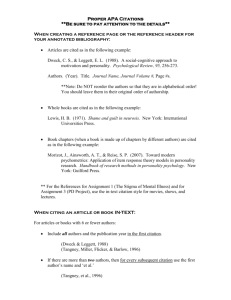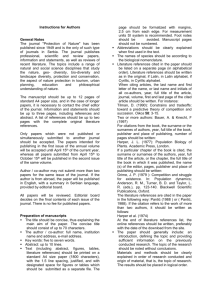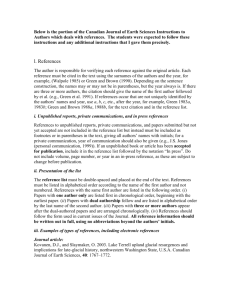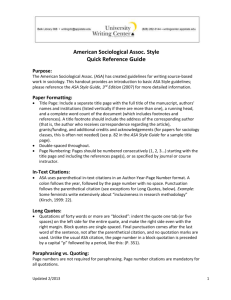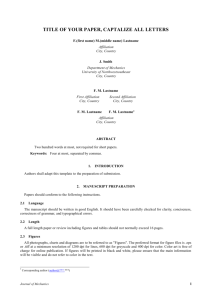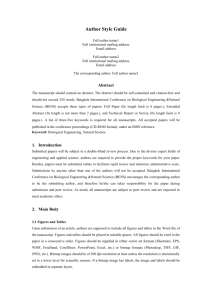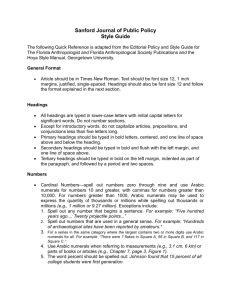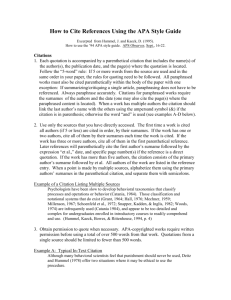Information to authors about formatting the papers in DfWnE2014
advertisement
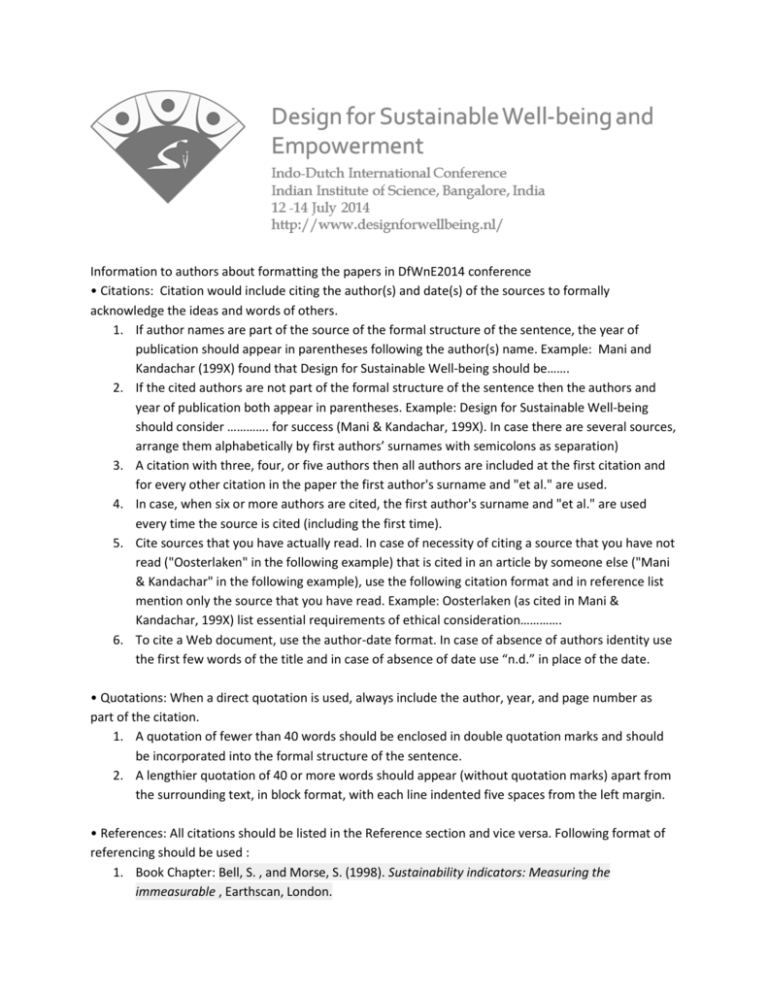
Information to authors about formatting the papers in DfWnE2014 conference • Citations: Citation would include citing the author(s) and date(s) of the sources to formally acknowledge the ideas and words of others. 1. If author names are part of the source of the formal structure of the sentence, the year of publication should appear in parentheses following the author(s) name. Example: Mani and Kandachar (199X) found that Design for Sustainable Well-being should be……. 2. If the cited authors are not part of the formal structure of the sentence then the authors and year of publication both appear in parentheses. Example: Design for Sustainable Well-being should consider …………. for success (Mani & Kandachar, 199X). In case there are several sources, arrange them alphabetically by first authors’ surnames with semicolons as separation) 3. A citation with three, four, or five authors then all authors are included at the first citation and for every other citation in the paper the first author's surname and "et al." are used. 4. In case, when six or more authors are cited, the first author's surname and "et al." are used every time the source is cited (including the first time). 5. Cite sources that you have actually read. In case of necessity of citing a source that you have not read ("Oosterlaken" in the following example) that is cited in an article by someone else ("Mani & Kandachar" in the following example), use the following citation format and in reference list mention only the source that you have read. Example: Oosterlaken (as cited in Mani & Kandachar, 199X) list essential requirements of ethical consideration…………. 6. To cite a Web document, use the author-date format. In case of absence of authors identity use the first few words of the title and in case of absence of date use “n.d.” in place of the date. • Quotations: When a direct quotation is used, always include the author, year, and page number as part of the citation. 1. A quotation of fewer than 40 words should be enclosed in double quotation marks and should be incorporated into the formal structure of the sentence. 2. A lengthier quotation of 40 or more words should appear (without quotation marks) apart from the surrounding text, in block format, with each line indented five spaces from the left margin. • References: All citations should be listed in the Reference section and vice versa. Following format of referencing should be used : 1. Book Chapter: Bell, S. , and Morse, S. (1998). Sustainability indicators: Measuring the immeasurable , Earthscan, London. 2. Journal Publication: Andreasen, J. (1996). “Urban tenants and community involvement.” Habitat International , 20 (3 ), 359-365. 3. Report: Calkins, H. W. , and Tomlinson, R. F. (1977). Geographic information systems: Methods and equipment for land use planning, U.S. Geological Survey , Reston, Va. 4. Conference/workshop proceeding: Gong, J. , and Otsubo, K. (1999). “A new approach to modeling land-use change applicable to a limited data set.” Proc., NIES Workshop on Information Bases and Modeling for Land Use and Cover Change Studies in East Asia , K. Ostubo, K. Tsuboi and M. Hiromoto, eds., National Institute for Environmental Studies, Tsukuba, Japan, 27-34. 5. Online Journal: Mani, M. , Ganesh, L. S. , and Varghese, K. (2003). “A futures system integrating cross-impact analysis and geographic information systems.” International Journal of Futures Studies , 5 , http://www.systems.org/HTML/fsj-v05/mani-title.htm (July 15, 2003). 6. Online articles/reports: National Center for Geographic Information and Analysis (NCGIA). (1995). “History of GIS.” NCGIA core curriculum: Unit 23 , http://www.gisca.adelaide.edu.au/kea/gisrs/gisrsrc/courses/gis/ncgia/u23.html (Mar. 28, 2002).


